The "Walking Stuka"
Introduction
The use of rockets by Germany did not waited for their encounter with the Soviet Katiuchas on the eastern front, far from it. Rocket development under Von Ohain or later the more famous Von Braun started well before the Peenemunde complex was created. There was even a fad between 1923 and 1933 since the book of Hermann Oberth. But the Army however in 1933 did not considered R&D to the benefit of modernizing the artillery corps. Still, works and experiments, always mediatized, by Oberth and Valier influenced a lot of teenagers, that would jump into the bandwagon of rocketry much later in 1938-39. Rockets initially were reserved to a special corps, the Nebeltruppen, for which were developed tailored launchers, the Nebelwerfer.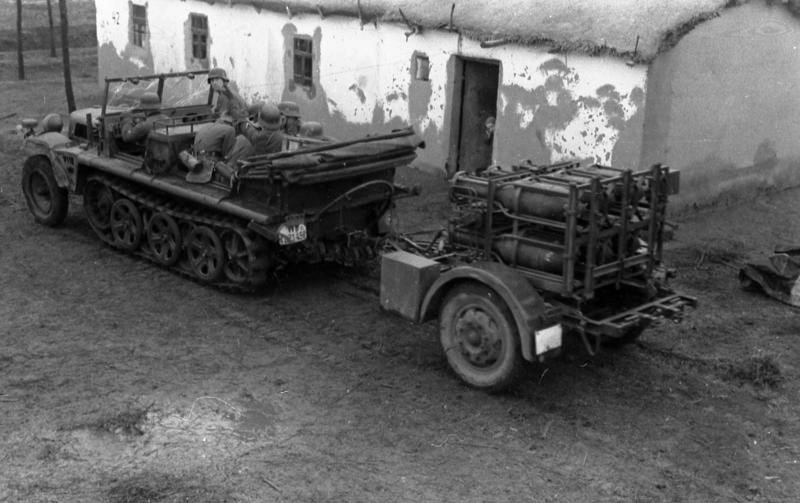
The usual Sd.Kfz.10 towing the Nebelwefer 41, primary mount for the Nebeltruppen in 1941
However work resumed on rocketry in 1936, at least to modernize the Nebeltruppen and give them heavy self-propelled grenades able to carry chemicals on the battlefield. Largely a "guarantee" of remaining WWI warfare thinking in case the Blitzkrieg would bog down, chemical batallions were never used as such and instead became auxiliaries of the artillery, tasked of operating rockets on the battlefield. The first adopted was the towed six-tube multiple rocket launcher Nebelwerfer 39, to skirt the limitations of the Treaty of Versailles on artillery.
The result of this research was the 28/32 cm Nebelwerfer 41, which entered service in early 1941 but was already deployed in 1940 when producton ready for trials and first combat experiments. They missed the campaign of France and Norway, but were ready for the Balkans campaign and were deployed on all fronts afterwards.
Nebeltruppen at first deployed the Nebelwerfer 41 in a towed version, with eight cradle launchers in a trailer behind an Sd.Kfz.10 light half track. It's only in late 1940 that search started on a better way to protect Nebeltruppen on the battlefield, and so to seek out an armoured half track. The choice soon fell on the mass produced and already proven Sd.Kfz.251.
About the Sd.Kfz 251/1
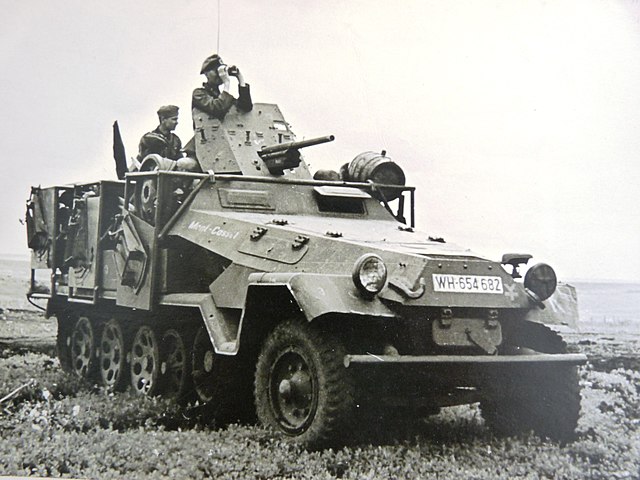
Vehicle of the SPW Schutzen Battalion 64 combining a Sd.Kfz.251/10 Ausf.C with rocket launchers.
The were two variants of the Sd.Kfz.251/1 called I, II and III. The I was basically the default panzergrenadier vehicle armed with two Mg34 or 42 under masks. The II mittlerer Schützenpanzerwagen mit Wurfrahmen, was the heavy rocket launcher platform of this present article, equipped with six 28cm Sprengranate/32cm Flammgranate under the other name Wurfrahmen 40, first ordered in late 1940. They appeared in limited numbers. The III was the mittlerer Schützenpanzerwagen (IR) “Falke”, usually produced on the Ausf.D and specially equipped with a very large infrared projector for night operations, in conjunction with the Sd.Kfz. 251/20 Uhu and screening for the IR Panther detachments. Second name was 251/20 “Falke”.
The Sd.Kfz 251 was the most common APC of the Wehrmacht in WW2. With over 15,000 made from 1939 until 1945 it was the main Panzergrenadiere (a dedicated infantry operating within Panzerdivisions) transport vehicle, apt to survive the frontline and based on a Hanomag half-track medium chassis. The hull protected the engine, cab and rear open compartment quite well despite thin armour (6 to 14 mm forward (0.24-0.55 in)), thanks to the well sloped plating. This was in contrast to the US built White M2-M3 which had straight plating.
The eight tonnes Sd.Kfz 251 was powered by a Maybach HL42 6-cyl, 100 hp, 12 hp/t and its suspension consisted on torsion arms for the aft interleaved wheeltrain, and leaf springs for the steerable forward axle. Top speed was limited 53 km/h (33 mph) down to 30 kph off-road, with a range of just 300 km (186 miles).
Design of the installation
The Sd.Kfz 251/1 II specifically did not diverged much from the basic /1 I vehicle, it had generally (at least no photo shows these) no rear MG.34 on a pintle fo AA defense not shielded forward Mg.34 either. Instead of ten Panzergrenadiere seated in the rear compartment, a small team of 3-4 Nebeltruppen were aboard, plus the driver and co-driver, which was often the officer in charge. Extra space in the vehicle could be used to store two spare rockets in cradles and gear. The most important modification was the welding on framing apparatus alongide the sloped hull at the rear, for three cradles containing the rockets on either side.They had vertical framing reinforcements to be supported by the lower chassis. But they also allowed the cradles to be pounted on rotating table at the center of each sub-frame (three in all) so to vary the launch elevation of these rockets, and thus range. The 28/32 cm Nebelwerfer 41 containers, often consummable wooden framing, were then fixed to the obliquely mounted metal frame, to have them angled up at roughly 45°, but again, it depended on thei battlefield setup. The framework had indeed adjustable base plates fitted over, alongside to hold 300 mm high explosive (HE) rockets (from 1942) or 280 mm HE as well as 320 mm incendiary rockets fired all from their loading crates.
The name "Wurfrahmen 40" or "launch frame 40" was thus given to this German World War II first multiple rocket launcher. Some used also captured French Renault UE Chenillette. It was famously nicknamed Stuka zu Fuss ("Stuka on Foot" or "Walking Stuka") but given its sound, some troops also called it the Heulende Kuh ("Bellowing Cow"). The vehicle was most often setup with a sight was assembled on the forward ring for the gunner, providing angle data to which the launchers were oriented and general travers obtained by positioning the vehicle, in coordination with the driver. The whole system was rudimentary, cheap, but efficient and could be mounted on any Ausf (variant) of the Half-Track.
About the 28/32 cm Rockets
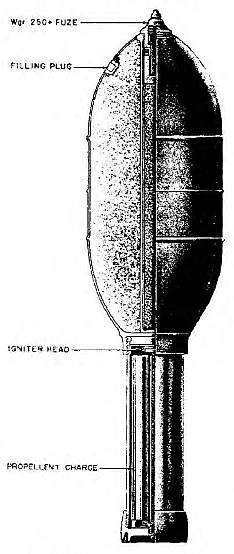
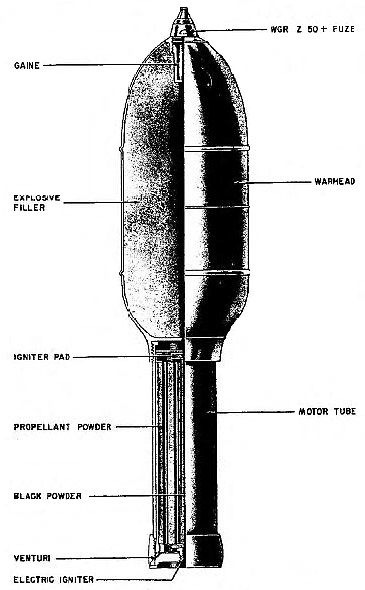
The 28/32 cm rockets also provided for the towed Nebelwerfer 41 (28/32 cm NbW 41) of the Nebeltruppen, saw service in all theaters except Norway and the Balkans. Sometimes the NbW 41 launcher was mounted on the back of a Sd.Kfz.4 Panzerwerfer. The important point were the rockets used: Placed in open metal frames, they were sized to fit the 32-centimetre (13 in) rocket, but adapter rails could be provided in ordere to fit the smaller 28-centimetre (11 in) rockets.
28 cm Wurfkörper Spreng (11 in) Weight 82 kilograms (181 lb), 50-kilogram (110 lb) HE warhead, max range 1,925 m (2,105 yd) 32 cm Wurfkörper Flamm (13 in) 79 kg (174 lb), Muzzle velocity 145 m/s (480 ft/s), max range 2,200 m (2,400 yd). Payload 50 litres (13 US gal) or 45 kgs./99 lb incendiary oil or poison gases/decontamination fluids. Thus ammunition covered after explosion cover 200 square metres (2,200 sq ft)
Both models were spin-stabilized and electrically-fired with a prominent exhaust trail. The Whuframmen 40's crew sometimes seek shelter inside the rear compartment before firing, or cleared the vehicle in case of explosion. They had to jump back quickly in order to avoid counter-battery fire. The rockets were fired one by one in a timed ripple. In 1943 appeared the 30 cm Wurfkörper 42 rocket, 30 cm 12-in.
The rockets were stored in crates and fired from their packing cases (Packkiste) with short hinged legs to adjust elevation. The more common were the wooden (schwere Wurfgerät 40 – heavy missile device) or tubular metal (schwere Wurfgerät 41 (sWG 41)) launch frames. Packing cases mounted on schwere Wurfrahmen 40 frames attached to the sides of Sd.Kfz. 251/1 half-track armored personnel carrier were also tested and used on various French tracked vehicles such as the Renault UE Chenilette and Renault R35.
Sd.Kfz.251/1 II specifications
Combat Deployment
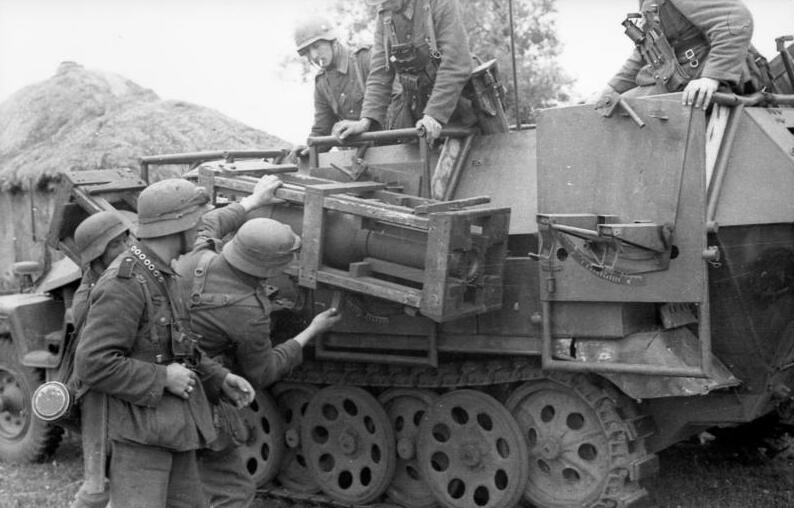
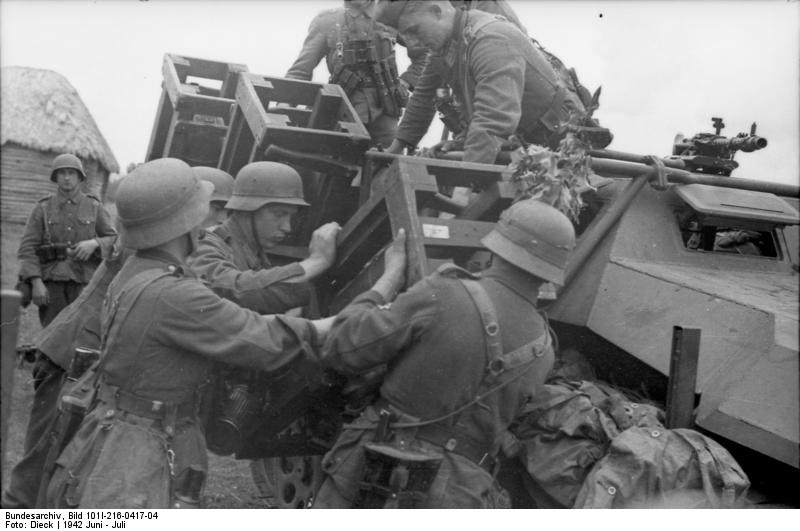
The 28/32 cm NbW 41 units were organized into batteries of six launchers, three per battalion. They were deployed as independent Werfer-Regiments and Brigades, and assigned either to mechanized infantry (Panzergrenadiere) or engineers as well as "position rocket regiments" (Stellungs-Werfer-Regimenter). The first were created and trained after trhe Battle of France in 1940 but almost all saw service on the Eastern Front and well as the Italian Campaign, France and Germany after D-Day. It's on the eastern front that the need of a more mobile, better protected battery was though of and based on the Sd.Kfz.251/1 II. They appeared depending on sources, in late 1942 or 1943 and stayed in limited numbers.


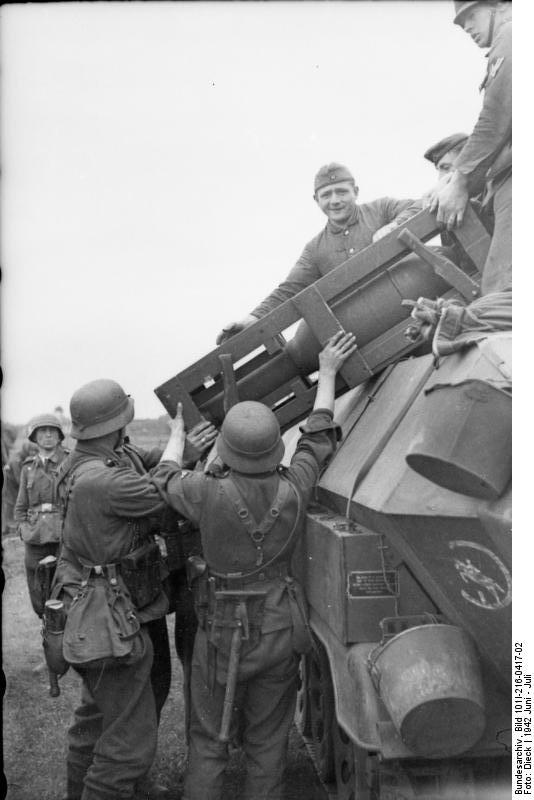
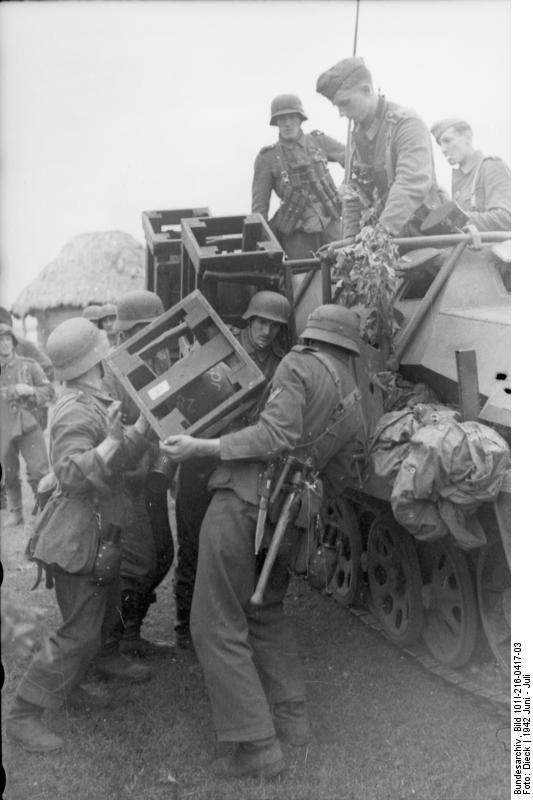
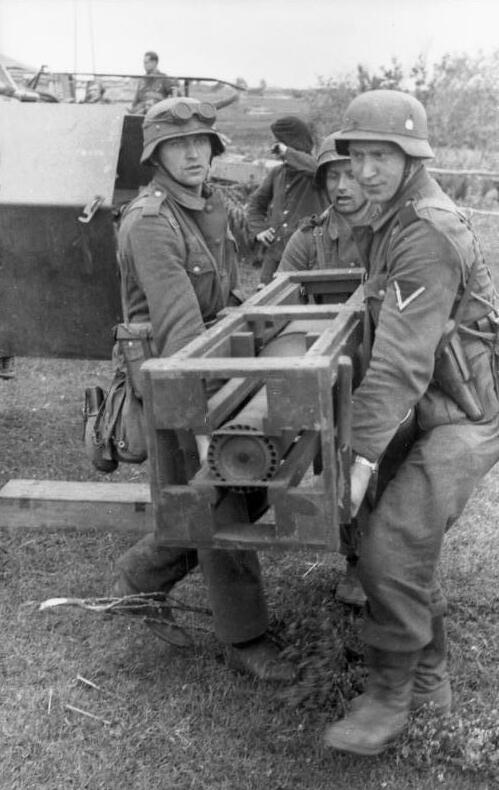
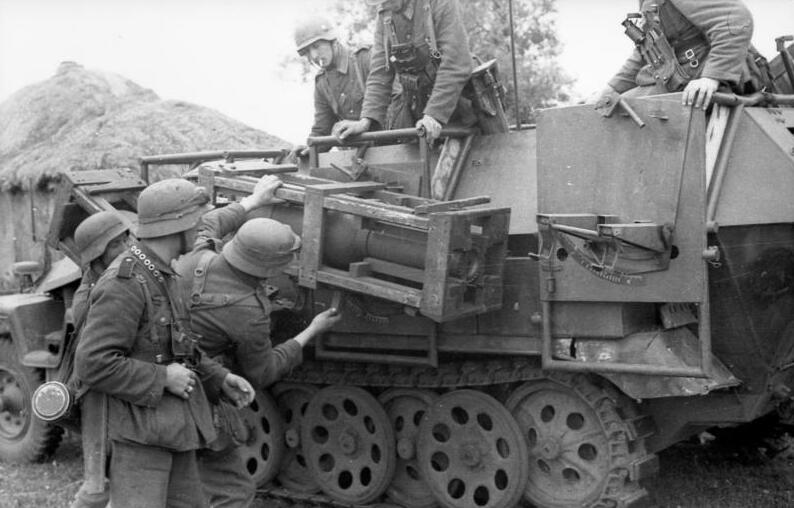
Deployment of a Wufrahmen 40 from stopping the vehicle to be fire ready. This was still a "close quarter" strike vehicle, only capable of a range of range between 1.9 and 2.2 km, respectively between the 28 and 32 cm rockets. By late 1944, the Sherman 75 coulkd destroy any target at 2000 m and in 1945, the British Comet or the Firely, up to 3,000 m, so well beyond.
Despite being spin stabilized, accuracy was an issue, and that condemned them to operate on large areas where reconnaissance signalled a lot of infantry and tanks, and fire to saturation, hoping some will make hit somthing or caused enough damage. The reloading process was time-consuming. It was discovered it could be uses as a support weapon for mobile Panzer formations and notably find its use in urban areas. It was notably used in Kharkov, Stalingrad, Leningrad among others, but also during the Warsaw uprizing in 1944.
Since the Sd.Kfz. 251 halftrack became a pricy commodity to install other weapons systems, engineers requisitions captured vehicles as well. In France, former Chenillette UE had either two launchers per side or four at the rear and it was quite efficient, very small, low target to detect with good mobility. The Hotchkiss H35 was also used to mount this time two per side and after June 1944, captured M3 halftracks had four frames mounted also, two per side, under the name of Gepanzerter Mannschaftstransportwagen M3 401(a) mit Wurfrahmen 40.
Refs
Baschin, J.; Block, M.; Nelson, J. & Tippmann, H. (2013). Nebel-, Panzer- und Vielfachwacher. Neumünster: Nuts & Bolts Verlag.Englemann, Joachim and Scheibert, Horst. Deutsche Artillerie 1934-1945: C. A. Starke, 1974
Gander, Terry and Chamberlain, Peter. Weapons of the Third Reich. Doubleday, 1979
Kameradschaft der ABC-Abwehr, Nebel- und Werfertruppen e.V. Die Nebel- und Werfertruppe (Regimentsbögen). 2001
lonesentry.com
Nebelwerfer_41
About the Beute M3 Wuhrframen
About the German rocket fad in 1923-33
en.wikipedia.org/wiki/Wurfrahmen_40
Stuka zu fuss - First MLRS in history (’40-’45)
Schwere Wurfrahmen 40 (sWuR 40)
wardrawings.be
Kit on scalemates
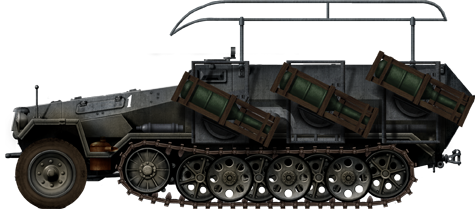
Sd.Kfz.251/1 II Ausf.B Mittlerer Schützenpanzerwagen mit Wurfrahmen, the famous “Stuka zu Fuß” or “Stuka on foot”, 7th Panzerdivision, Russia, November 1941.
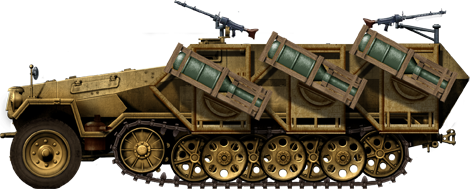
Ausf B, Russia summer 1941
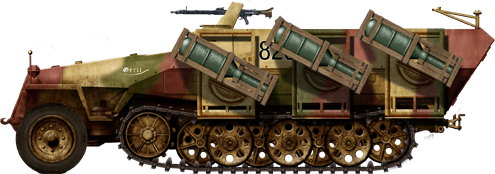
Ausf D, Normandy, summer 1944
Gallery
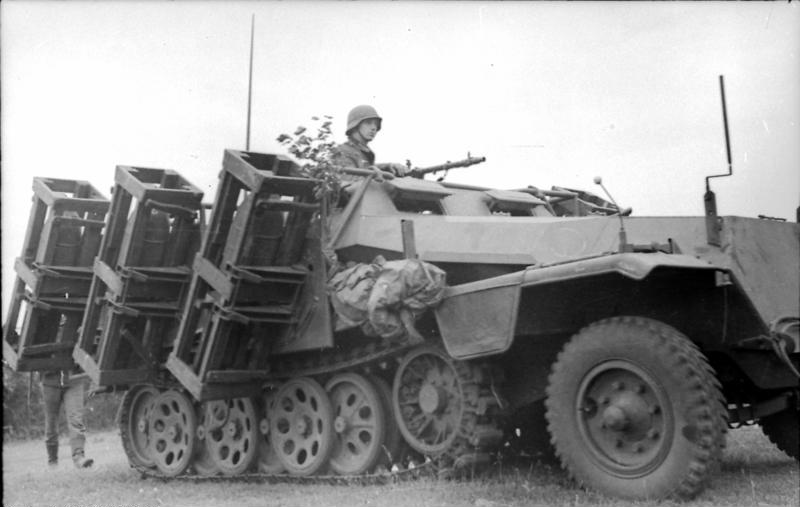
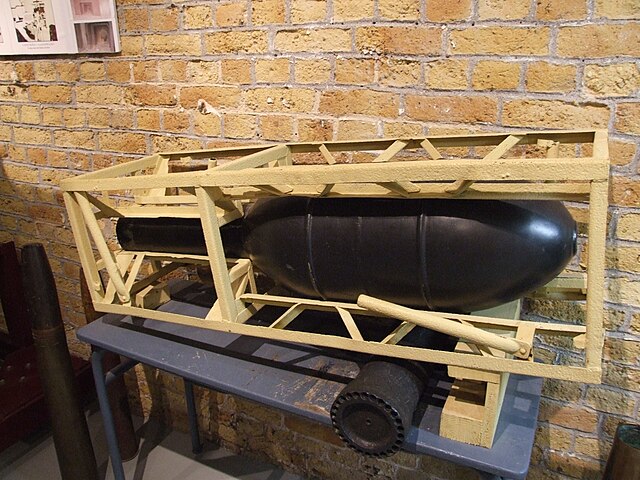
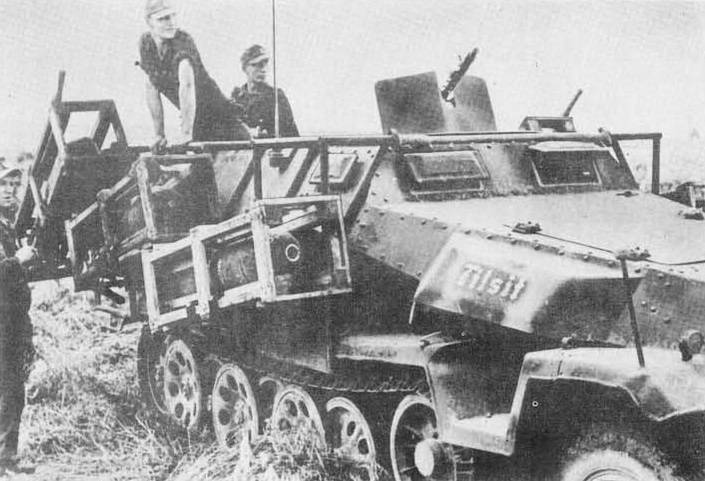
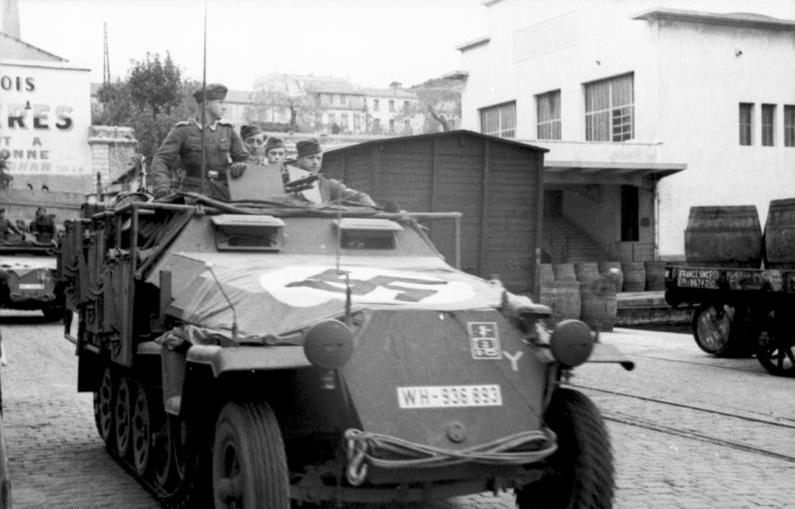
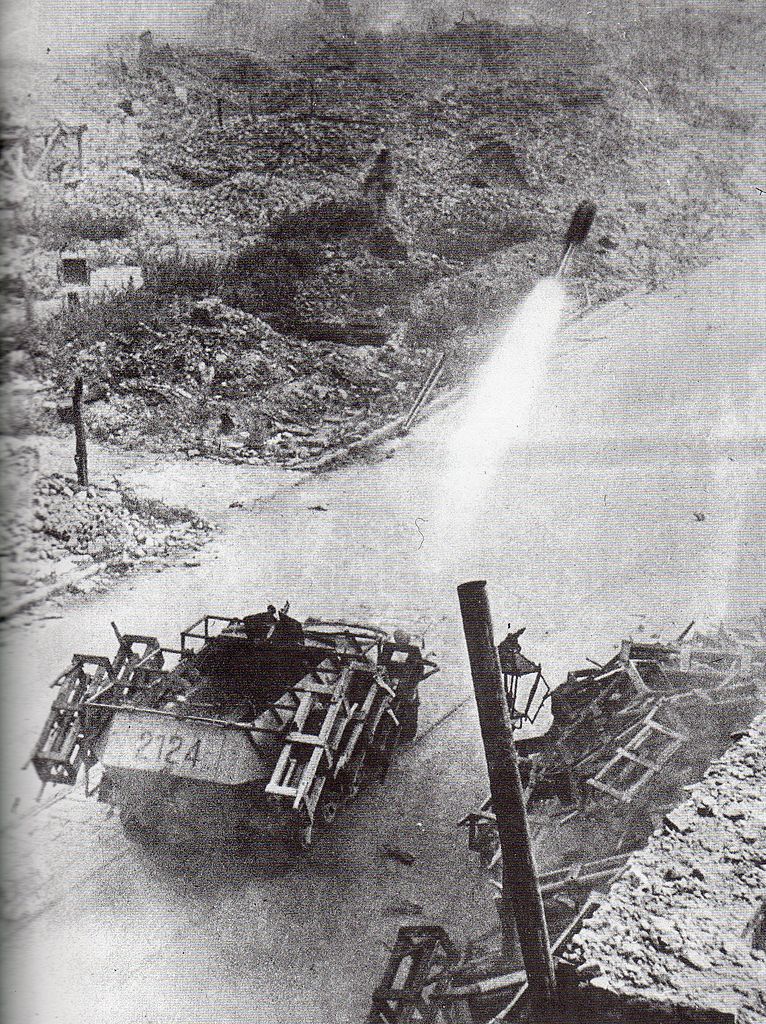
Videos

WW2 Tanks




























WW2 tanks posters

All Tiger tanks liveries.

Panther liveries and variants

WW2 Armour - All tanks











Tanks aces and single tanks series

Find more there

Museums, Movies, Books & Games
The Tanks and Armor in pop culture
Tanks and armored vehicles in general are only really grasped when seen first person: The mass, the scale, it's all there. Explore also the way tanks were covered in the movie industry, in books and in video games.Movies:
Best tanks movie on warhistoryonline.com
On imdb.com
On bestsimilar.com/
miltours.com
liveabout.com/
watchmojo.com
Video Games:
pcgamesn.com
historyhit.com
levvvel.com
vg247.com/best-tank-games
mmobomb.com/
alienwarearena.com

